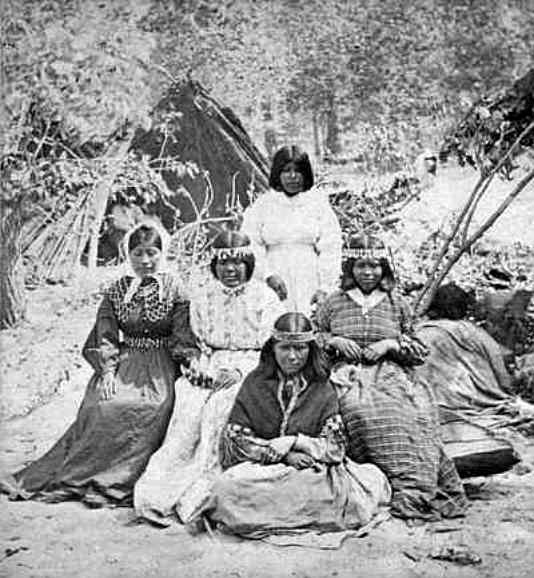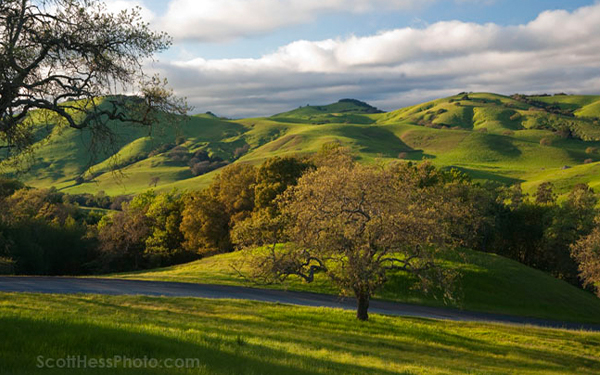Almost everyone who’s had the pleasure of stepping foot on the land at the IONS EarthRise campus remarks that the land feels special, even sacred. It’s more than the beauty of the 194 acres of rolling hills, abundant wildlife, or inspiring views. There is a sense that this land invites and supports our collective evolution. But what is the history of this land?
There is abundant archaeological evidence that the powerful Miwok tribe lived in the area for generations in peace and ecological harmony on the land that is now home to the Institute of Noetic Sciences. The sacred, spiritual energy of their long stewardship can be felt as you gaze out over rolling hills and soaring vistas, or while strolling along paths winding through glens and valleys. It is palpable as you pause to listen to the mating songs of wild turkeys; observe foraging deer; or meditate in one of several fragrant, natural cathedrals canopied by live oaks, buckeye, and bay trees on this ancient coast.
 To help fill in the history gaps of the area, we reached out to one of our neighbors. According to Diane Einstein of the nearby non-profit The Olompali People, “At the time of Spanish contact, Olompali was a large trading/manufacturing village of the Coast Miwok people. Dr. Charles Slaymaker, who excavated the site in the 1970s, determined that the village would have encompassed a 25 square mile tribal area” [which likely included the IONS EarthRise campus]. More recent excavations have determined that Olompali is an ancient site that reaches back 8,000 years. We know very little about the spiritual life of the Coast Miwok, but we do know that they lived in abundance and harmony with the land. By 1816 the vibrant village of Olompali had been emptied of its people — 350 Olompalis were baptized into Missions San Francisco and San Jose.
To help fill in the history gaps of the area, we reached out to one of our neighbors. According to Diane Einstein of the nearby non-profit The Olompali People, “At the time of Spanish contact, Olompali was a large trading/manufacturing village of the Coast Miwok people. Dr. Charles Slaymaker, who excavated the site in the 1970s, determined that the village would have encompassed a 25 square mile tribal area” [which likely included the IONS EarthRise campus]. More recent excavations have determined that Olompali is an ancient site that reaches back 8,000 years. We know very little about the spiritual life of the Coast Miwok, but we do know that they lived in abundance and harmony with the land. By 1816 the vibrant village of Olompali had been emptied of its people — 350 Olompalis were baptized into Missions San Francisco and San Jose.
“More recently, the campus was part of the Spanish land grants that transformed once-wild California into vineyards and picturesque cattle and sheep. During the Mexican era, Olompali became an 8,800 acre Mexican land grant [in 1843], granted to Camilo Ynitia, a Coast Miwok, who had been responsible for Mission San Rafael’s livestock that grazed on the ancient Olompali lands. Camilo was born in a traditional village adjacent to Olompali, and when he was a young teenager he was baptized with his parents at Mission San Rafael. Because Camilo’s father knew the land, the mission gave him the responsibility for the their livestock that grazed at Olompali. Camilo inherited this responsibility when his father died. Camilo’s Mexican land grant is the only one granted to a Northern California native American that survived review of the U.S. Government’s Lands Commission.”
Since 2000, this sacred land has been the home of the Institute of Noetic Sciences at EarthRise, a worthy heir to the legacy of the land. In recent years, EarthRise has hosted thousands of mind-body explorers who come to study with internationally acclaimed educators, scientists, philosophers, health practitioners, life and business coaches, artists, and spiritual masters.
EarthRise is also a sought-after site for national and international events in science, spirituality, art, social activism, transformation, environmentalism, health, and business. Its desirable location, just thirty-five minutes north of San Francisco, makes it one of Northern California’s premier retreat sites.
For more information on how to book your next event here, visit the EarthRise page on our website.
